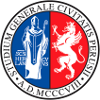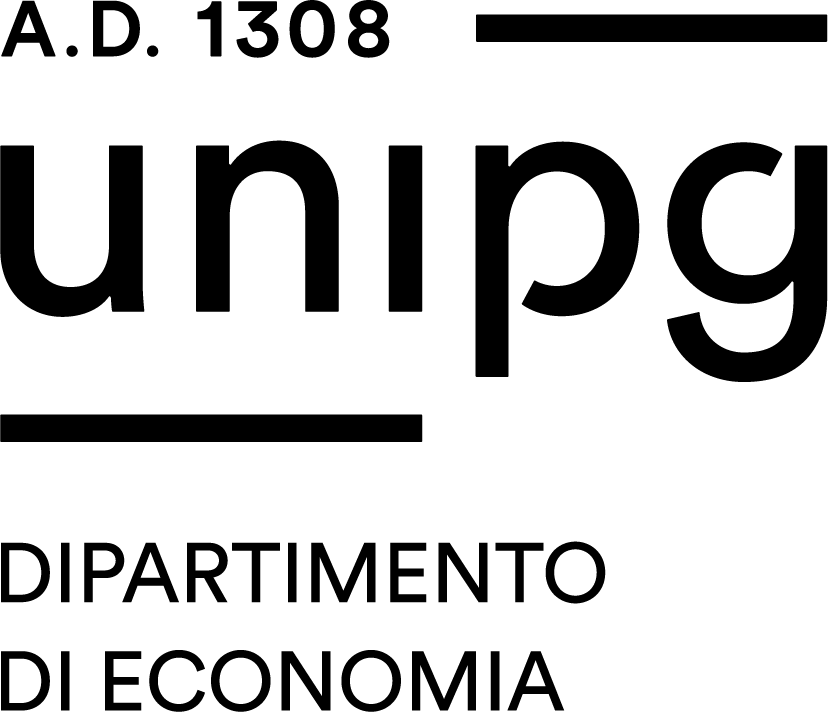Study-unit RELATIONAL MODELS IN DYNAMIC PSYCHOLOGY
| Course name | Philosophy and psychological science and techniques |
|---|---|
| Study-unit Code | A002687 |
| Curriculum | Comune a tutti i curricula |
| CFU | 12 |
| Course Regulation | Coorte 2023 |
| Supplied | 2025/26 |
| Type of study-unit | |
| Type of learning activities | Attività formativa integrata |
| Partition |
MODELS IN INTERPERSONAL AND INTER-DYNAMIC PSYCHOLOGY I MODULE
| Code | A002690 |
|---|---|
| CFU | 6 |
| Lecturer | Livia Buratta |
| Learning activities | Caratterizzante |
| Area | Psicologia dinamica e clinica |
| Sector | M-PSI/07 |
| Type of study-unit |
Cognomi A-L
| CFU | 6 |
|---|---|
| Lecturer | Livia Buratta |
| Lecturers |
|
| Hours |
|
| Language of instruction | Italian. |
| Contents | The course is devoted to introduce students to a historical-conceptual path of the main models of the mind and human functioning in the psychoanalysis area. |
| Reference texts | Mitchell, S.A., Black, M.J. (1996). L'esperienza della psicoanalisi. Storia del pensiero psicoanalitico moderno. Italia: Bollati Boringhieri. Cap: Introduzione, Capitoli 1, 3, 4, 5, 8, 9 Alessandra De Coro, Francesca Ortu (2010) Psicologia dinamica: I modelli teorici a confronto, Capitoli 10, 17, 18 Fonagy, P., Target, M. (2001). Attaccamento e Funzione Riflessiva. Italia: Raffaello Cortina Editore. Cap: Prefazione e Capitoli 1, 2, 3, 4, e 5, 6 ONE BOOK OF YOUR CHOICE FROM: Fonagy, P., Target, M. (2001). Attaccamento e Funzione Riflessiva. Italia: Raffaello Cortina Editore. Cap: Capitoli 7, 8, 9 Ammaniti, M., Gallese, V. (2014). La nascita della intersoggettività. Lo sviluppo del Sè tra psicodinamica e neurobiologia. Italia: Raffaello Cortina Editore. Cap: Introduzione, 1, 2, 3, 5, 6 Beebe, B., Lachmann, F. (2003). Infant Research e Trattamento degli Adulti. Un modello sistemico-diadico delle interazioni. Italia: Raffaello Cortina Editore. Cap: 6, 7, 8 Other material will be made available based on the teaching activities that will be carried out during the lectures. The reference texts are valid for all students who will be taking the examination, attending, non-attending, working, students with disabilities, and/or DSA. Please note that the final syllabus will in any case be communicated by the lecturer at the beginning of the course. |
| Educational objectives | The course objectives are defined as follows concerning the following domains: Knowledge and understanding skills: To enable the student to become acquainted with the basic principles of classical and contemporary psychoanalytic thought, the main psychodynamic models of the mind, and development. Application of knowledge: to enable the student to acquire skills in the psychodynamic reading of events relating to human functioning (uni and bi-personal). Autonomy of judgment: the student will be able to integrate knowledge acquired at a theoretical level with the specificity of concrete cases for understanding human functioning. Communication: the student will acquire specific terminology that will enable him/her to communicate with specialists (and non-specialists) in the field and/or in an interdisciplinary manner. Ability to learn: the student will develop the competence to study independently and to research specialized material in the sector also and through the use of bibliographic research in sector databases. |
| Prerequisites | To understand the theoretical intervention models proposed in the lecture, it is important that the student has listening and comprehension skills. |
| Teaching methods | Lectures. Invited expert seminars (if possible). Participatory activities with students in the classroom (if possible). |
| Other information | During the course, the student can check the course material and any announcements/notices from the lecturer on UniStudium. |
| Learning verification modality | There is a final assessment consisting of a written examination lasting 50 minutes divided into two parts: First part: 30 multiple-choice questions on the course content (20 minutes) – 15 questions related to Module 1 and 15 questions related to Module 2. Second part: 2 open-ended questions on the course content (30 minutes) – 1 question related to Module 1 and 1 question related to Module 2. Evaluation criteria: - Closed questions: 1 point for a correct answer/ 0 points for a wrong or missing answer - Open questions: each question is marked in thirtieths; assessment criteria: Correctness of the answer (relevance) Coherence of the answer Centring of the answer Final grade: average of marks obtained on closed and open questions. Students with disabilities and/or SLDs will have up to a maximum of 30% more time to take the test and may use any compensatory tools. Students with disabilities and/or SLDs are invited to visit the page on tools and measures and to agree in advance on what is necessary with the Professor (https://www.unipg.it/disabilita-e-dsa) If the student intends to take the exam a year before the year scheduled in the study plan, it is recommended that he/she attend the cycle of lessons and take the exam in the first useful call after the lessons have ended, thus respecting the semester of the teaching schedule. |
| Extended program | The course offers students an overview of the most recent developments in dynamic psychology, with a focus on interpersonal and intersubjective models. Interpersonal and neuroscientific constructs will be explored in relation to the psychodynamic model, with particular attention to the development of intersubjectivity and reflective functioning as phenomena that emerge in the early relationship with the caregiver and are fundamental for understanding relational, intersubjective, and transformative processes within the analytic field. Through the reading of primary sources and the analysis of clinical cases, relational and intersubjective psychoanalytic models will be examined, also exploring theoretical developments related to psychopathology and clinical practice, both in childhood and adulthood. |
| Obiettivi Agenda 2030 per lo sviluppo sostenibile | Goal 3. Ensure healthy lives and promote well-being for all at all ages |
Cognomi M-Z
| CFU | 6 |
|---|---|
| Lecturer | Carlo Garofalo |
| Lecturers |
|
| Hours |
|
| Language of instruction | Italian |
| Contents | The course is devoted to introduce students to a historical-conceptual path of the main models of the mind and human functioning in the psychoanalysis area. |
| Reference texts | Mitchell, S.A., Black, M.J. (1996). L'esperienza della psicoanalisi. Storia del pensiero psicoanalitico moderno. Italia: Bollati Boringhieri. Cap: Introduzione, Capitoli 1, 3 (sullivan), 4, 5, 8, 9 • Alessandra De Coro, Francesca Ortu (2010) Psicologia dinamica: I modelli teorici a confronto, Capitoli 10 (sullivan), 17, 18 • Fonagy, P., Target, M. (2001). Attaccamento e Funzione Riflessiva. Italia: Raffaello Cortina Editore. Cap: Prefazione e Capitoli 1, 2, 3, 4, e 5, 6 ONE BOOK OF YOUR CHOICE FROM: • Fonagy, P., Target, M. (2001). Attaccamento e Funzione Riflessiva. Italia: Raffaello Cortina Editore. Cap: Capitoli 7, 8, 9 • Ammaniti, M., Gallese, V. (2014). La nascita della intersoggettività. Lo sviluppo del Sè tra psicodinamica e neurobiologia. Italia: Raffaello Cortina Editore. Cap: Introduzione, 1, 2, 3, 5, 6 • Beebe, B., Lachmann, F. (2003). Infant Research e Trattamento degli Adulti. Un modello sistemico-diadico delle interazioni. Italia: Raffaello Cortina Editore. Cap: 6, 7, 8 Other material will be made available based on the teaching activities that will be carried out during the lectures. The reference texts are valid for all students who will be taking the examination, attending, non-attending, working, students with disabilities, and/or DSA. Please note that the final syllabus will in any case be communicated by the lecturer at the beginning of the course. |
| Educational objectives | The course objectives are defined as follows concerning the following domains: Knowledge and understanding skills: To enable the student to become acquainted with the basic principles of classical and contemporary psychoanalytic thought, the main psychodynamic models of the mind, and development. Application of knowledge: to enable the student to acquire skills in the psychodynamic reading of events relating to human functioning (uni and bi-personal). Autonomy of judgment: the student will be able to integrate knowledge acquired at a theoretical level with the specificity of concrete cases for understanding human functioning. Communication: the student will acquire specific terminology that will enable him/her to communicate with specialists (and non-specialists) in the field and/or in an interdisciplinary manner. Ability to learn: the student will develop the competence to study independently and to research specialized material in the sector also and through the use of bibliographic research in sector databases. |
| Prerequisites | To understand the theoretical intervention models proposed in the lecture, it is important that the student has listening and comprehension skills. |
| Teaching methods | Lectures. Invited expert seminars (if possible). Participatory activities with students in the classroom (if possible). |
| Other information | During the course, the student can check the course material and any announcements/notices from the lecturer on UniStudium. |
| Learning verification modality | There is a final assessment consisting of a written examination lasting 50 minutes divided into two parts: First part: 30 multiple-choice questions on the course content (20 minutes) – 15 questions related to Module 1 and 15 questions related to Module 2. Second part: 2 open-ended questions on the course content (30 minutes) – 1 question related to Module 1 and 1 question related to Module 2. Evaluation criteria: - Closed questions: 1 point for a correct answer/ 0 points for a wrong or missing answer - Open questions: each question is marked in thirtieths; assessment criteria: Correctness of the answer (relevance) Coherence of the answer Centring of the answer Final grade: average of marks obtained on closed and open questions. Students with disabilities and/or SLDs will have up to a maximum of 30% more time to take the test and may use any compensatory tools. Students with disabilities and/or SLDs are invited to visit the page on tools and measures and to agree in advance on what is necessary with the Professor (https://www.unipg.it/disabilita-e-dsa) If the student intends to take the exam a year before the year scheduled in the study plan, it is recommended that he/she attend the cycle of lessons and take the exam in the first useful call after the lessons have ended, thus respecting the semester of the teaching schedule. |
| Extended program | The course offers students an overview of the most recent developments in dynamic psychology, with a focus on interpersonal and intersubjective models. Interpersonal and neuroscientific constructs will be explored in relation to the psychodynamic model, with particular attention to the development of intersubjectivity and reflective functioning as phenomena that emerge in the early relationship with the caregiver and are fundamental for understanding relational, intersubjective, and transformative processes within the analytic field. Through the reading of primary sources and the analysis of clinical cases, relational and intersubjective psychoanalytic models will be examined, also exploring theoretical developments related to psychopathology and clinical practice, both in childhood and adulthood. |
| Obiettivi Agenda 2030 per lo sviluppo sostenibile | Goal 3. Ensure healthy lives and promote well-being for all at all ages |
PSYCHOANALYSIS AND INFANT RESEARCH II MODULE
| Code | A002691 |
|---|---|
| CFU | 6 |
| Lecturer | Claudia Mazzeschi |
| Learning activities | Caratterizzante |
| Area | Psicologia dinamica e clinica |
| Sector | M-PSI/07 |
| Type of study-unit |
Cognomi A-L
| CFU | 6 |
|---|---|
| Lecturer | Claudia Mazzeschi |
| Lecturers |
|
| Hours |
|
Cognomi M-Z
| CFU | 6 |
|---|---|
| Lecturer | Claudia Mazzeschi |
| Lecturers |
|
| Hours |
|


